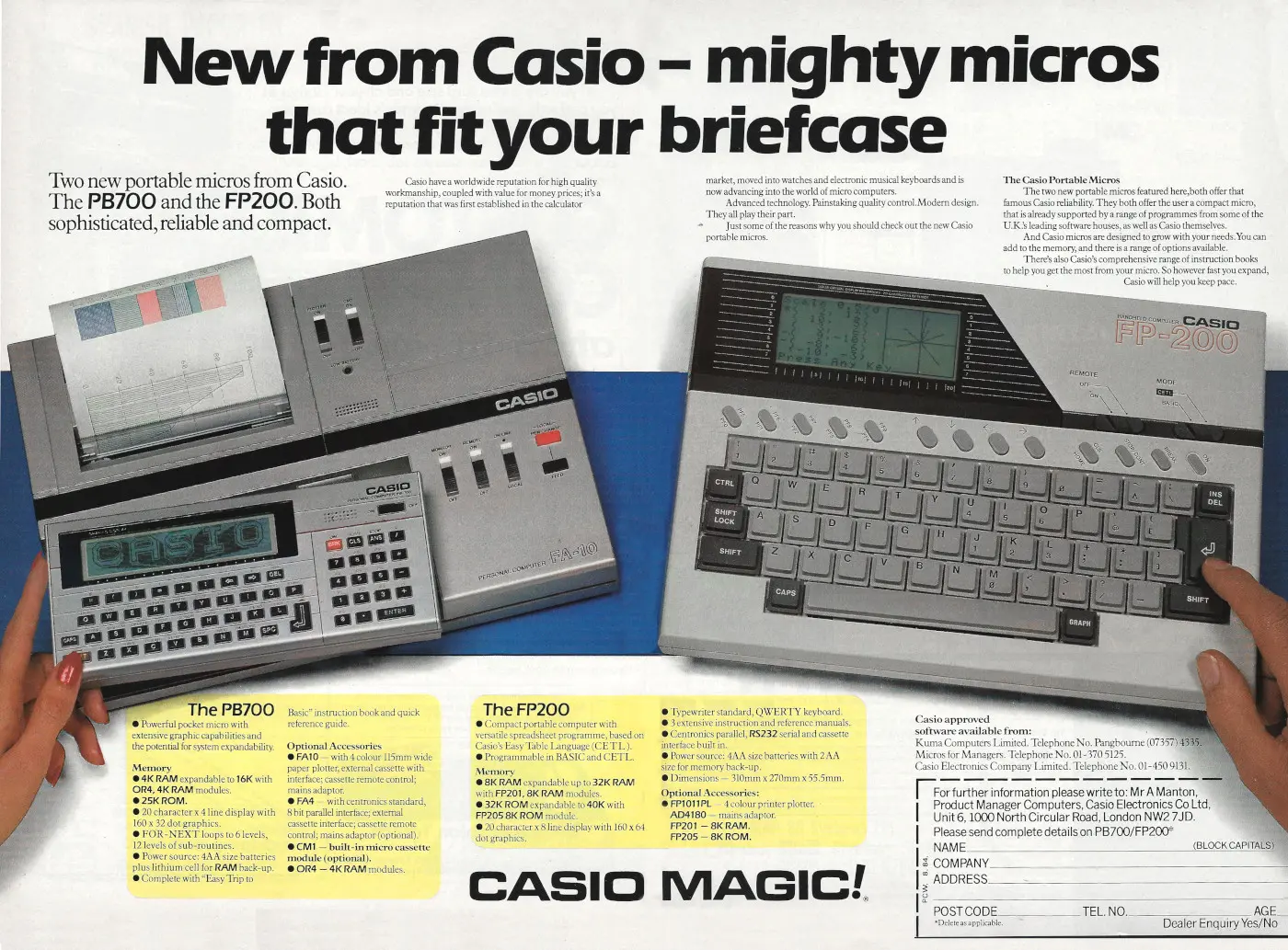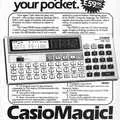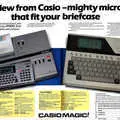Casio Advert - August 1984
From Personal Computer World

New from Casio - mighty micros that fit in your briefcase
1983 and 1984 were definitely the years of the "lap-held" computer, as Personal Computer World liked to call it.
Pioneered in 1983 by machines like Epson's HX-20, they weren't true laptops as they lacked a proper screen, using instead small LCD panels which were, at least by 1984, dot-adressable and so could do primitive graphics. Casio's PB700 was the first to offer this type of display, with its 4x20-character display
Established in 1946, Casio's first technological product was an electro-mechanical calculator, released in 1957. This and subsequent improvements in Japan were about to destroy the adding-machine market.
When Commodore's Jack Tramiel saw the future during a visit to Japan, he returned to the US and switched the company - at the time an adding-machine manufacturer - over to the development of proper desktop and pocket calculators.
Casio was also part of the early "wrist terminal" revolution, as it started shipping its "Casio data bank read sensor" watch at the end of 1984.
The watch could recognise hand-written alpha and numeric characters which, according to Personal Computer World's Japanese correspondent Shinichiro Kakizawa:
"you write on the glass surface of the watch with your finger [to] become the input data to the watch and are consequently stored in its memory".
Although it could only store 1K of data, that was enough for 50 names and telephone numbers, whilst the watch could also double as an eight-digit calculator using the same handwritten inputs[1].
Retailing for only $70 - about £210 in 2025 - Casio's watch clearly presents an interesting fore-runner to modern "smart watches", some 40 years later.
Date created: 05 July 2015
Last updated: 11 December 2024
Hint: use left and right cursor keys to navigate between adverts.
Sources
Text and otherwise-uncredited photos © nosher.net 2025. Dollar/GBP conversions, where used, assume $1.50 to £1. "Now" prices are calculated dynamically using average RPI per year.

